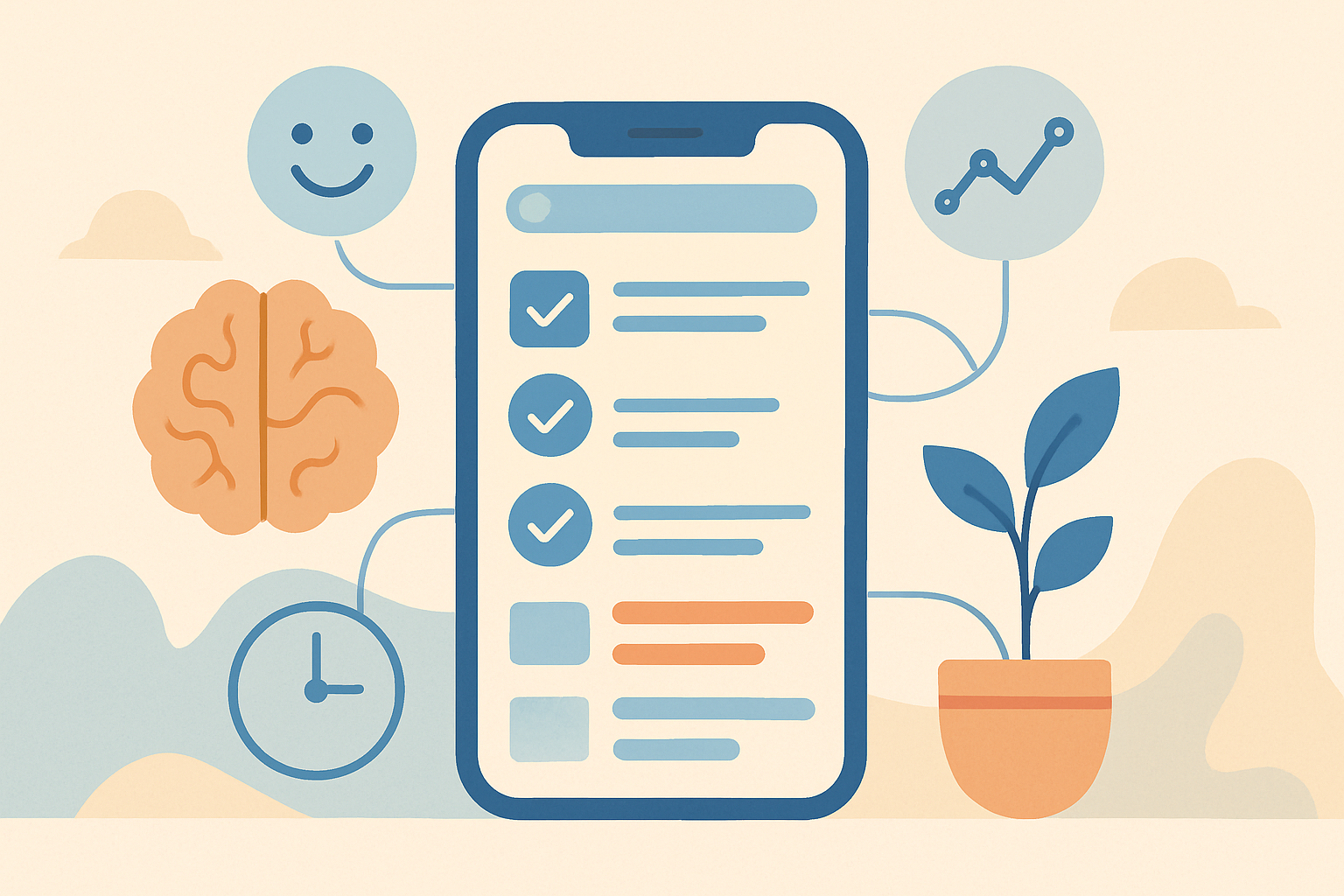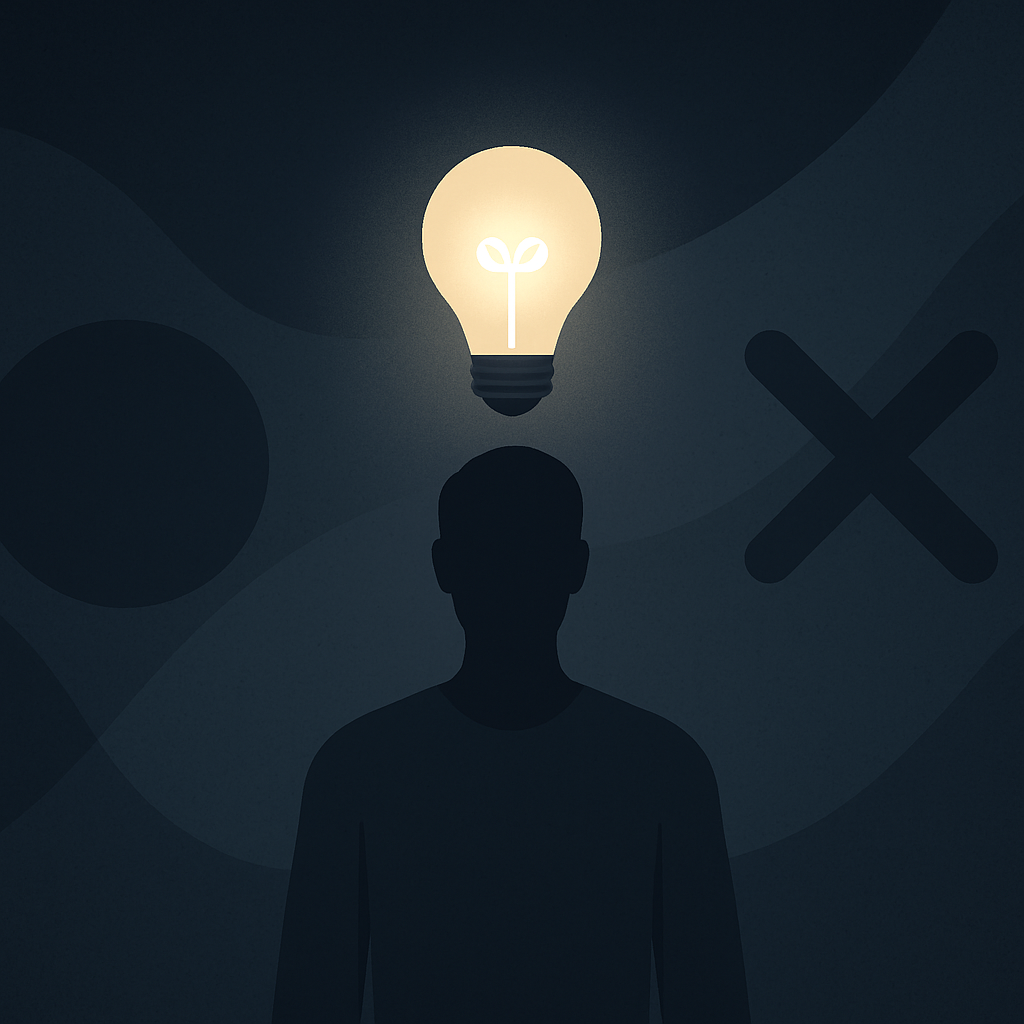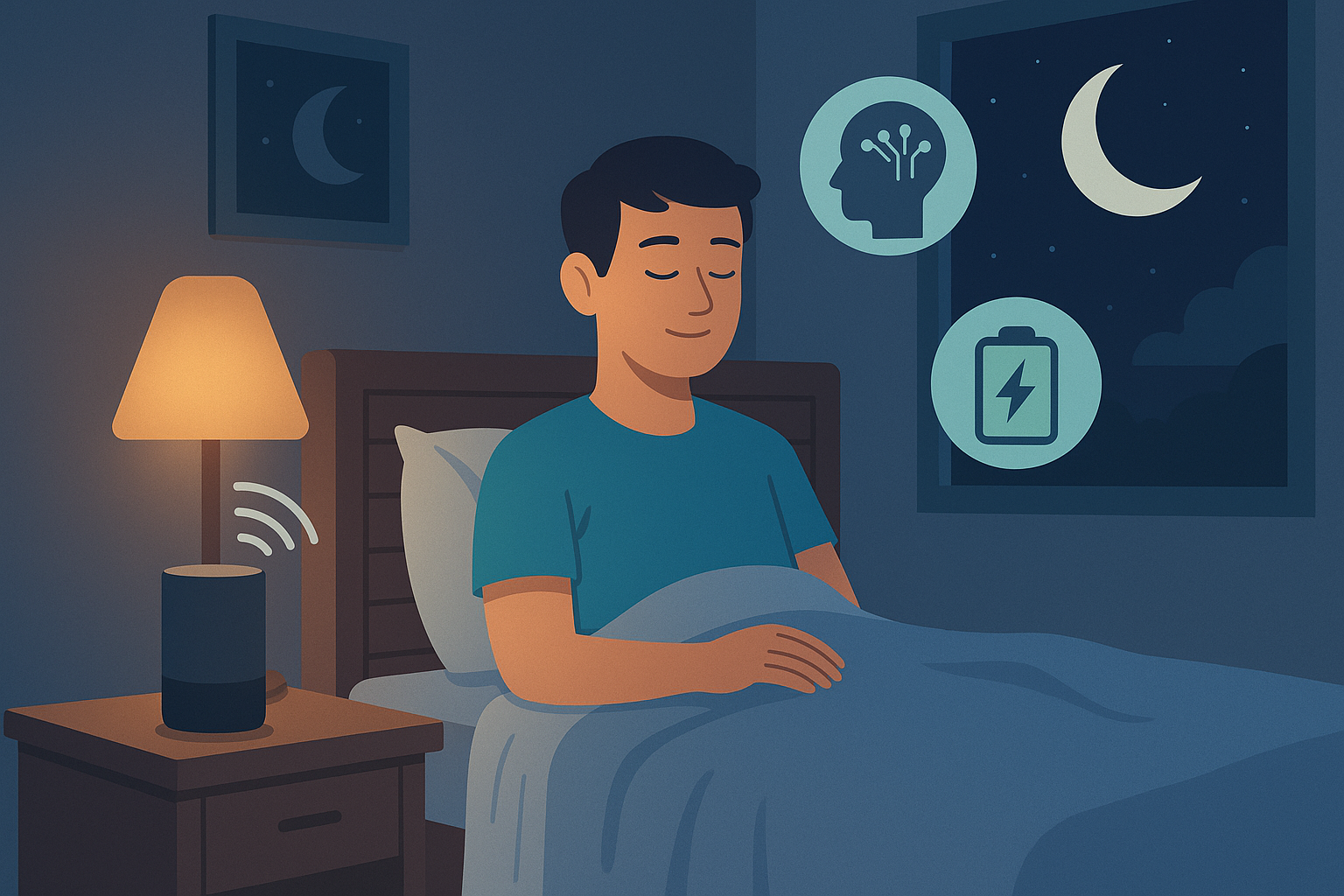AI Wellness is no longer just about meditation or nutrition — it’s about how we exist within our digital lives.
Screens dominate our days, algorithms guide our choices, and connectivity defines our pace.
In this landscape, well-being is no longer a luxury — it’s a system that must evolve alongside technology.
That’s where AI wellness comes in: the next generation of intelligent well-being, where artificial intelligence becomes a tool for self-regulation, awareness, and mental clarity.
AI wellness is not about disconnecting. It’s about connecting better.

What Is AI Wellness?
AI wellness represents the intersection between health technology and artificial intelligence — systems that analyze behavior, emotions, and habits to promote psychological balance and sustainable productivity.
Unlike traditional wellness apps that rely on user input, AI-driven platforms listen, learn, and adapt.
They interpret context — from your tone and calendar to your sleep rhythm — and respond proactively to support your mental and cognitive state.
In essence, AI wellness is a personalized nervous system for your digital life: quietly observing, regulating, and optimizing your daily rhythm for balance.
How AI Creates a New Kind of Digital Wellness
Artificial intelligence excels at pattern recognition, which makes it ideal for understanding human behavior.
AI systems can detect the micro-patterns that precede fatigue, distraction, or stress — often before you even notice them.
Example:
- Reclaim AI monitors your digital load and inserts mental recovery periods into your calendar.
- Mindsera interprets emotional tone in journal entries to identify burnout signals.
- Hume AI detects emotional strain in voice patterns and adapts your digital environment accordingly.
Together, these systems transform wellness into a dynamic process — preventive, not reactive.
| Category | Function | AI Tool Example | Wellness Impact |
|---|---|---|---|
| Mental Clarity | Detects cognitive fatigue | Reclaim AI | Prevents burnout |
| Emotional Awareness | Analyzes tone and mood | Mindsera | Improves self-reflection |
| Focus Optimization | Adapts work rhythm | Motion | Reduces overload |
| Environmental Adjustment | Reacts to biofeedback | Hume AI | Promotes calm and balance |
Instead of waiting for stress to build, AI creates micro-adjustments that restore calm as you work, communicate, and live online.
The Human Side of AI Wellness
AI wellness is not about outsourcing well-being to machines — it’s about partnership.
By externalizing cognitive management (tracking energy, focus, emotion), it allows humans to focus on what machines can’t replicate: creativity, empathy, and intuition.
This collaboration forms the foundation of augmented awareness — where technology mirrors your mental state and helps refine it.
Example:
Your AI assistant detects that your morning energy is high but your emotional tone is neutral.
It adjusts your day: scheduling creative work in the morning, adding reflective breaks in the afternoon, and delaying high-pressure tasks until your focus stabilizes.
This isn’t self-help. It’s systemic awareness.
The Science Behind AI Wellness
The human nervous system operates on feedback loops — it senses change, processes it, and adapts.
AI wellness tools replicate this through constant data monitoring and adaptive feedback.
They combine behavioral data (habits), cognitive data (focus levels), and emotional data (sentiment or tone) to build a holistic model of your mental state.
Machine learning then uses that model to personalize wellness strategies in real time.
| Input Type | Data Source | AI Output | Human Benefit |
|---|---|---|---|
| Cognitive | App usage & focus time | Task prioritization | Reduces mental clutter |
| Emotional | Text & voice tone | Mood analysis | Improves self-awareness |
| Physical | Wearable sensors | Energy tracking | Encourages recovery |
| Environmental | Light, sound, schedule | Context adaptation | Enhances comfort |
This is the evolution of wellness — from mindfulness apps to mindful systems.
From Wellness to Performance
One of the most misunderstood aspects of digital wellness is that calm and productivity are opposites.
In reality, calm is the foundation of performance.
AI wellness reinforces this by optimizing the body’s natural rhythms — aligning task demands with biological energy cycles.
Example:
A knowledge worker uses Motion to plan their day. The AI notices dips in attention every afternoon and automatically schedules low-intensity tasks for that time.
Meanwhile, Reclaim AI groups meetings around mid-morning peaks in social energy.
The result: higher focus, lower fatigue, and more balanced cognitive output.
Over time, AI wellness systems turn daily work into a rhythmic flow — sustainable, predictable, and free from burnout cycles.
Emotional Intelligence and AI Wellness
Emotional regulation is the hidden core of digital well-being.
AI is now capable of detecting subtle cues in our communication — changes in tone, pacing, or vocabulary — that reveal emotional stress.
This doesn’t mean machines understand emotion; it means they recognize its signals.
When paired with ethical design and user consent, these insights can enhance empathy and reduce emotional overload.
For instance, your digital workspace might detect frustration and trigger a short mindfulness exercise, or your journaling app may recommend a cognitive reframing prompt.
AI wellness shifts emotion from something reactive to something measurable — and therefore manageable.
The Future of AI Wellness
As AI becomes integrated into daily life, wellness will no longer be an app but an ecosystem.
Imagine environments that sense your cognitive state and adjust automatically:
- Lighting shifts warmer during high stress.
- Notifications mute when your attention narrows.
- AI-curated soundscapes match your breathing rhythm.
This is the emerging field of neuroadaptive wellness — systems that support mental health passively, without requiring constant user input.
Workplaces and homes will evolve into intelligent environments that foster equilibrium — not through restriction, but through resonance.
The Ethical Dimension
For AI wellness to succeed, transparency and privacy are essential.
Data on mental health and cognition must be protected and anonymized to prevent misuse.
The goal is augmentation, not manipulation — AI that empowers human autonomy rather than directing it.
When designed ethically, these systems become invisible allies: aware, adaptive, and deeply human-centered.
Conclusion
Well-being in the digital era is no longer about escape — it’s about evolution.
AI wellness redefines what it means to live intelligently: to be aware, connected, and at peace within a world of constant input.
The goal isn’t to eliminate stress or distraction, but to design systems that understand them — and help us rise above them.
When technology learns to listen, wellness becomes effortless.
And that’s when balance stops being a goal — and becomes a state of design.
Further Reading & Related Insights
Internal link:
- Finding Calm Online: Smarter Balance Through AI — Discover how AI fosters awareness and peace through digital mindfulness.
External links:
Blog
This section provides an overview of the blog, showcasing a variety of articles, insights, and resources to inform and inspire readers.
-

AI Habit Tracking and the New Rhythm of Modern Self-Improvement
AI Habit Tracking. Progress used to depend on discipline. Now, it depends on data.…
-

AI Decision Making and the New Discipline of Intentional Living
AI Decision Making. Every “yes” has a cost. Every time you agree to something…
-

The Perfect AI Night Routine to Sleep Better and Think Smarter
AI Night Routine. Your morning doesn’t begin when you wake up — it begins…
